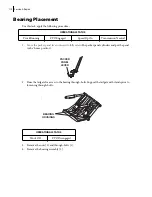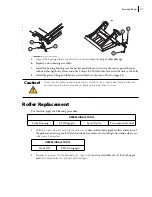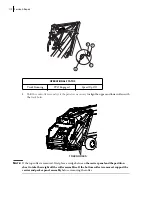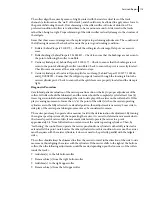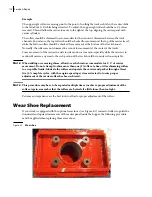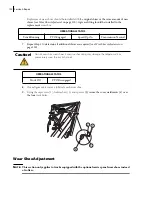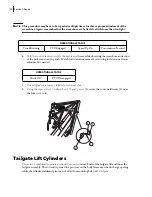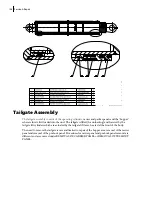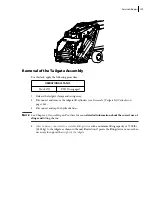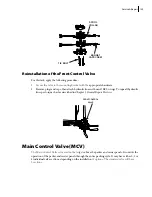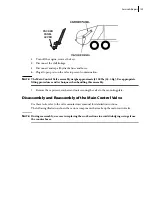
Service & Repair 121
The purpose of adjusting the carrier panel wear shoes (see Figure 8-3) is to provide for smooth
upward and downward travel of the carrier and packer panels with a minimum of side travel. In
essence, the wear shoes are adjusted to align the carrier panel to the carrier operating cylinder stroke
positions, and by shimming the wear shoes in a diagonal fashion, the carrier may be adjusted to allow
for fabrication variances of the many components of the tailgate assembly.
Figure 8-3
Wear shoes
Wear shoes are to be adjusted by the use of shims (part #186536) placed behind the Teflon plastic
plates (see Figure 8-2). This will allow the wear shoes to either be moved outward by the addition of
shims, or moved inward by the subtraction of shims. It should be noted that the shims are used only
as required; there is no set amount of shims per wear shoe.
However, over-shimming of the wear shoes will result in track distortion. The preferred condition of
the wear shoes is to allow them to have a minor amount of side travel in the tracks rather than being
too tight. Proper shimming of the wear shoes will avoid costly damage to the structure of the tailgate.
Diagnostic Procedure
Careful and patient evaluation of the carrier panel in motion is the key to proper adjustment of the
wear shoes. All wear shoes should be lubricated, and the carrier should be completely cycled at least
four (4) times to gain an initial understanding of the side to side play of the carrier on the wear shoe
pins. If this play is causing movement of more than ¼” at the point of the wear shoe(s) when the
carrier operating cylinders are in the fully retracted or extended position, then adjustment is
necessary. Some side to side play of the carrier panel during movement may be considered common.
The carrier panel may be operated in a manner to aid in the determination of adjustment. By turning
the engine speed up system off, then operating the carrier, it is easier to determine movement due to
the slowed speed of carrier. Also, if movement is detected, operate the carrier to a point
approximately 2-4” from full retraction or extension of the carrier operating cylinders. Then, by
“feathering” the control lever, operate the carrier panel until one cylinder is either fully retracted or
extended. At this point, note how far the other cylinder is from this condition. In essence, the carrier
must be square with the carrier cylinders; it does not need to be perfectly parallel with the tailgate
sides.
Summary of Contents for 2R-III
Page 1: ...2R III MAINTENANCE MANUAL...
Page 2: ......
Page 3: ...2R III MAINTENANCE MANUAL...
Page 5: ......
Page 6: ......
Page 20: ...10 Introduction...
Page 42: ...32 Safety...
Page 58: ...48 Preventive Maintenance Figure 5 1 Hydraulic tank w return filter 1 2 3 4 5 6 7 8...
Page 66: ...56 Preventive Maintenance...
Page 102: ...92 Troubleshooting...




